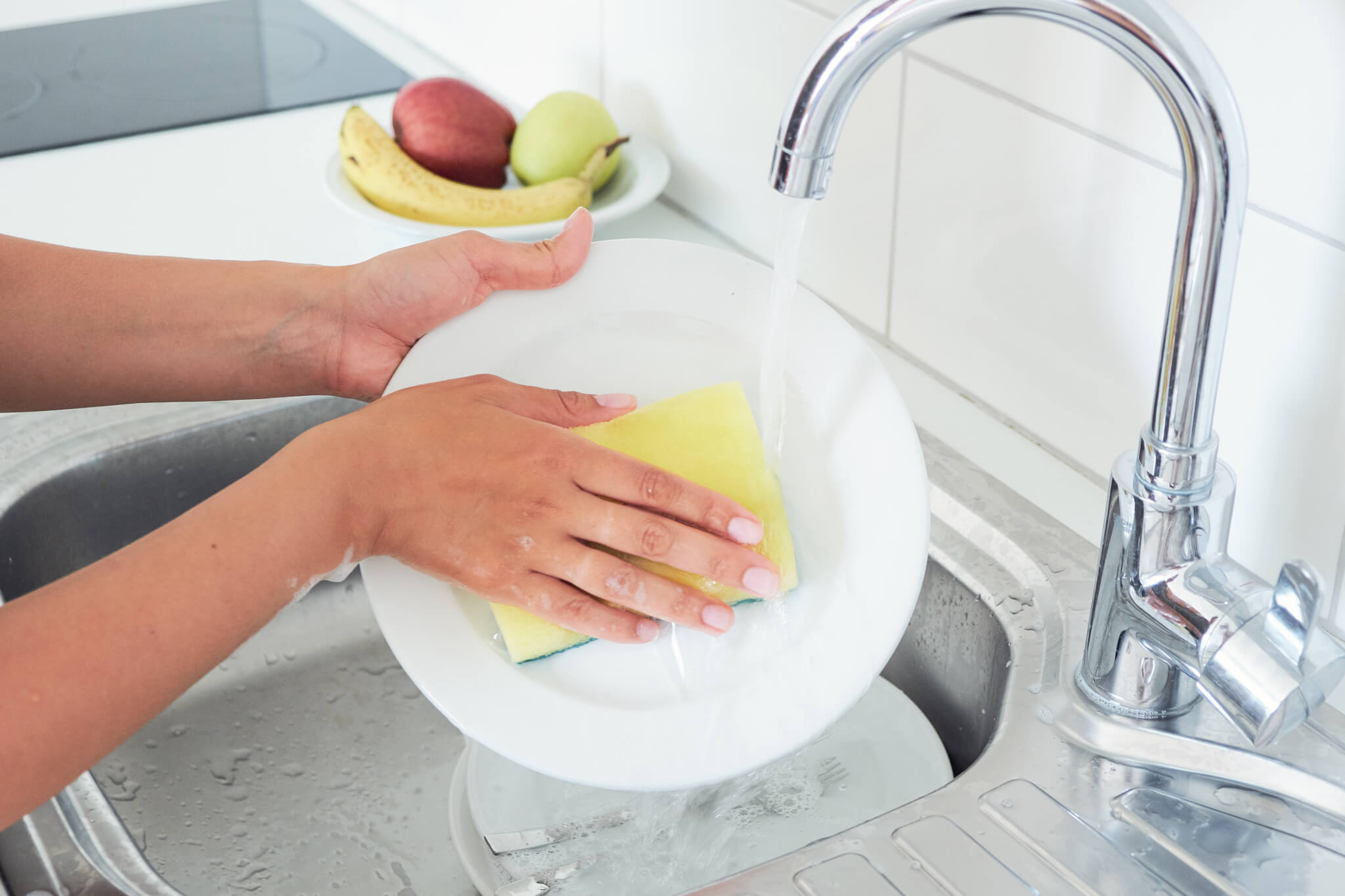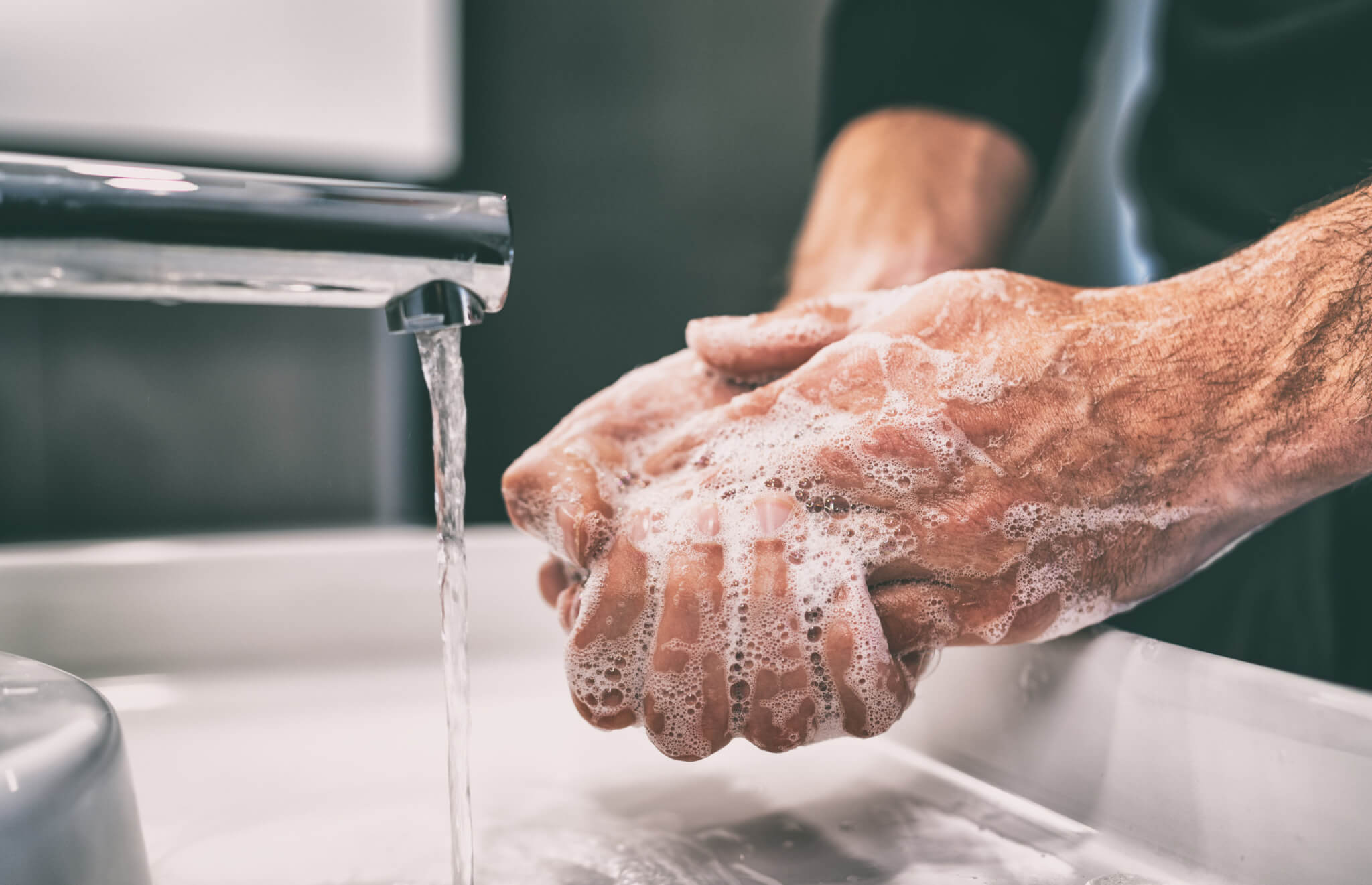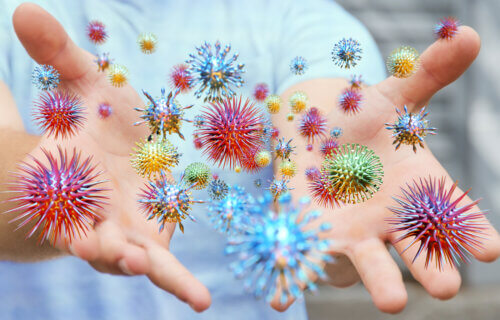It’s hard to walk around medical clinics, schools, restaurants, or even general office buildings these days without seeing hand sanitizer stations attached to wall after wall. Germ awareness is more prevalent than ever before — and for good reason. Hidden beneath the sheen of the ordinary, lies a teeming world of bacteria—microscopic tenants that inhabit some of the most unsuspecting places. As we go about our daily routines, little do we know that we’re brushing shoulders, quite literally, with an invisible menagerie of microorganisms. And yet despite this heightened awareness, there are still so many places we overlook when it comes to staying sanitized. Perhaps even more concerning is that so many of still fail to wash our hands regularly and properly.
To that end, we wanted to remind you about seven common spots where bacteria are not just visitors; they’re thriving locals, places you might never suspect are hotbeds for microbial life.
The journey through our bacterial compatriots’ favored haunts is as surprising as it is enlightening. From the sleek surfaces of our tech gadgets to the cozy corners of our handbags, bacteria make themselves at home in spaces where cleanliness appears to reign. The revelation of these microbial metropolises challenges our conventional wisdom on cleanliness and sheds new light on the ubiquitous nature of these organisms.
But fear not—this exposé is not a call to arms (or antibacterials) in a war against the microscopic. Instead, it’s an invitation to marvel at the resilience and ubiquity of bacteria, and perhaps to rethink our strategies for cohabiting with them. Or quite simply, the act of washing your hands can go a long way considering how much bacteria you unwittingly bathe them in. Here’s a look at seven places you might not realize are crawling with bacteria:
1. Smartphones

If you’re like, well, pretty much everyone, your phone constantly finds its way into your hands. Experts estimate that people who use their phone frequently wind up touching the screen 5,000 times per 24 hours! Research shows that smartphones harbor bacteria like Staph and E. coli. A report from the American College of Allergy, Asthma and Immunology warns our handheld gadgets also contain elevated levels of cat and dog allergens.
Most people rarely clean their phones. Considering how devices sit on so many different surfaces, then go into pockets or handbags, join many of us in the bathroom, and then get pressed firmly onto your face — it’s no surprise our smartphones are very likely a key source of bacteria entering the body.
2. Kitchen sponges

Kitchen sponges are moist and contain nutrients for bacteria. Consider this: the average kitchen sponge carries more bacterial species than a lab Petri dish, according to one study.
The structure of the sponge makes it a very friendly place for microbes to live Sponges often sit at room temperature allowing bacteria like E. coli to thrive. Are you cleaning your sponge off with soap before and after use, and replacing your sponge frequently?
3. Water bottles

Reused water bottles can contain mold and bacteria especially if they are not washed thoroughly. Letting them air dry after washing promotes more bacteria growth. According to WaterFilterGuru.com, the average reusable water bottle carries 40,000 times the amount of bacteria as a toilet seat!
Different types of reusable water bottles can also harbor different levels of bacteria. Spout-top and screw-top lids carry the most bacteria of all water bottle types, with 30 million CFUs each.
A squeeze-top water bottle had 6,000 times the bacteria of a toilet seat. Experts recommend washing your bottle daily and sanitizing it at least once a week.
4. Fountain Soda Water

Your bottled water isn’t the only place loaded with germs. Fountain soda water lines are also teeming with bacteria, researchers say. If you’re often filling your cup at your favorite restaurant with water from the soda dispenser, consider yourself warned.
In their study, scientists reported that 41 percent of the water samples from soda fountains tested positive for total coliforms. Results show the presence of genetic material from harmful bacteria such as Salmonella, Pseudomonas aeruginosa, and E. coli.
5. Handbags

Handbags and purses hold personal items but also come into contact with dirty surfaces. Consider all the dirty items that get stored inside the bags, none of which are routinely cleaned.
A 2015 study of both men’s and women’s handbags concluded almost all 138 bags examined were “vectors for potential transmission of diseases.” Overall, 95% had bacterial contamination, with strains of Micrococcus and Staphylococcus the most common bacteria found. Men’s purses tended to have higher levels than women’s bags.
6. Self-Checkout Screens

Whether you’re picking up your groceries at the supermarket or going on a shopping trip to Target or Walmart, you may find yourself trying to leave the store sooner by using the self-checkout kiosks. Unfortunately, those touchscreens are being touched by so many dirty fingers, they’re hot beds for bacteria.
An investigation conducted by British scientists from the Infection Innovation Consortium (iiCON) found E.coli, which causes vomiting, on nearly all the surfaces tested. Results also showed positive tests for fecal bacteria and microbes that can lead to urinary tract infections (UTIs) on self-service screens.
Researchers emphasize that while surfaces may look clean, they can be covered in invisible bacteria. Simple steps like keeping hands clean can help reduce the transfer of germs from one person to another, particularly during the winter months when hospital admissions for illnesses like Norovirus and flu tend to spike.
7. Pet toys

Few things make our pets happier than when we play with them and their toys. But did you know that those balls, stuffed animals, and other chewables are quite filthy? Dogs primarily use their mouths to play with toys, which can carry bacteria that may be harmful to humans and other pets. According to the National Sanitation Foundation (NSF), these toys can also collect bacteria and viruses from various surfaces they come into contact with throughout the day.
A 2011 NSF germ study found that pet toys were a source of coliform bacteria, yeast, and mold in many homes. Despite this, a Petco study revealed that nearly one-third of pet parents are unaware that pet toys can accumulate dirt, bacteria, yeast, and mold.
Cleaning your dog’s toys is essential to remove potentially harmful bacteria and viruses, such as E. coli, parvovirus, kennel cough, and some parasites. This not only protects your dog but also the humans who interact with the toys during playtime.
You’re Probably Not Washing Your Hands Well
Now, you might think to yourself that you’re doing a good job cleaning your hands, but research suggests you likely arent. Despite the widely known recommendation of washing hands for 20 seconds, most people fall short, with studies suggesting that only 5.3 percent of people spend 15 seconds or more washing, rubbing, and rinsing their hands.
If you think it doesn’t really matter, science and arithmetic tells us otherwise. A mathematical model from the American Institute of Physics demonstrates that it takes 20 seconds of vigorous hand-washing to effectively remove viruses and bacteria from the surface of the skin. The model shows that bacteria are trapped in the “valleys” of the skin’s surface, requiring a strong stream of water and fast scrubbing to dislodge them.

The simplified two-dimensional model captures the key mechanics of hand-washing by estimating the time scales on which particles, such as viruses and bacteria, can be removed. It consists of one wavy surface moving past another, with a thin film of liquid between the two. The particles are trapped on the rough surfaces of the hand in potential wells, and sufficient energy must be put into the water flow to overcome the force holding the particles down.
Dr. Phil Hammond from the American Institute of Physics compares the process to removing a stain from a shirt, stating that the faster the motion, the more likely it is to come out. He emphasizes that if hands are moved too gently or slowly, the forces created by the flowing fluid may not be strong enough to overcome the force holding the particle down. It is important to note that the model does not take into account the chemical or biological processes that occur when using soap during hand-washing.
As for whether it’s best to use hot or cold water, as well as harsh or gentle soaps, scientists say it really doesn’t matter. One study looking at water temperature when it comes to hand-washing concludes that cooler water is just as effective as a steamy hand bath. Similarly, opting for a gentler soap will still get rid of all those viruses stuck to your skin. It’s really about what is most comfortable for you — and what will get you to making handwashing a habit.
Look, you don’t need to become a germaphobe to avoid bacteria infections or common viruses. It’s really common sense if you think about it: anything that is being touched frequently is going to be exposed to or collect whatever is on the fingers touching it. Proper hand hygiene first comes down to being aware of where your hands have been and what they’ve come in contact with. If you decide to wash your hands, make sure you’re going for that full 20 seconds.
StudyFinds’ Editor-in-Chief Steve Fink contributed to this report.

Balderdash…
Germs are everywhere. That’s why God gave us immune systems.
This old song is getting pretty tiresome. Yes, there are “Germs” everywhere. We live in a virtual sea of bacteria, fungi, and other microscopic organisms. Current estimates are that we have more germ cells in and on our bodies than human cells. We can not eliminate them all, as some of them are required for survival. The trick is to maintain our immune system, which starts with the preservation of our gut bacteria, which is the first portion of our immune system.
Trying to sterilize our environment will ultimately damage our intestinal bacteria, which will, in turn, weaken our immune system. In short, we are sterilizing ourselves to death, especially our children.
Multiple studies show that children who grow up on a farm, playing with the animals and rolling in the dirt, are healthier than their city-dwelling neighbors, who live in presumedly more sterile and, therefore, safer environments.
Please read the real research and consider your choices carefully before you depend on the advice of the so-called “Experts.”